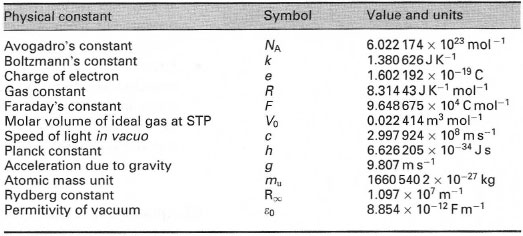Recommendations for describing measurements in SI units
Basic format- Express each measurement as a number separated from its units by a space. If a prefix is required, no space is left between the prefix and the unit it refers to. Symbols for units are only written in their singular form and do not require full stops to show that they are abbreviated or that they are being multiplied together.
- Give symbols and prefixes appropriate upper or lower case initial letters as this may define their meaning. Upper case symbols are named after persons but when written out in full they are not given initial capital letters.
- Show the decimal sign as a full point on the line. Some metric countries continue to use the comma for this purpose and you may come across this in the literature: commas should not therefore be used to separate groups of thousands. In numbers that contain many significant figures, you should separate multiples of 103 by spaces rather than commas.
Compound expressions for derived units
- Take care to separate symbols in compound expressions by a space to avoid the potential for confusion with prefixes. Note, for example, that 200 m s (metre seconds) is different from 200 ms (milliseconds).
- Express compound units using negative powers rather than a solidus U): for example, write mol m-3 rather than mol/m3. The solidus is reserved for separating a descriptive label from its units.
- Where there is a choice, select relevant (natural) combinations of derived and base units, e.g. you might choose units of Pa m-1 to describe a hydrostatic pressure gradient rather than kg m-2 s-1, even though these units are equivalent and the measurements are numerically the same.
Use of prefixes
- Use prefixes to denote multiples of 103 (Table 9.3) so that numbers are kept between 0.1 and 1000.
- Treat a combination of a prefix and a symbol as a single symbol. Thus, when a modified unit is raised to a power, this refers to the whole unit including the prefix.
- Avoid the prefixes deci (d) for 10-1 and centi (c) for 10-2 as they are not strictly SI.
- Express very large or small numbers as a number between 1 and 10 multiplied by a power of 10 if they are outside the range of prefixes shown in Table 9.3.
- Do not use prefixes in the middle of derived units: they should be attached only to a unit in the numerator (the exception is in the unit for mass, kg).
 |
| Table 9.4 Some physical constants in SI terms |
*Note:For the foreseeable future. you will need to make conversions from other units to SI units. as much of the literature quotes data using imperial. c.g.s. or other systems. You will need to recognize these units and find the conversion factors required. Examples relevant to chemistry are given in Box 9.1. Table 9.4 provides values of some important physical constants in SI units.




